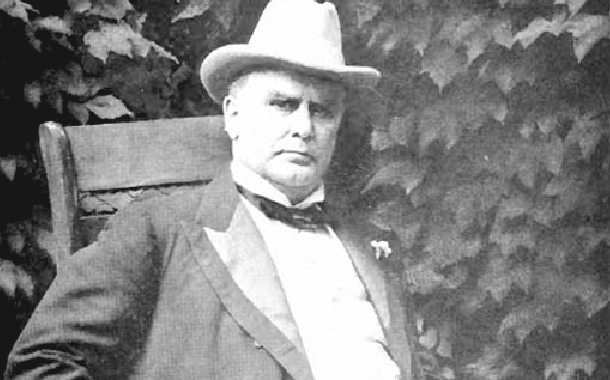<![CDATA[The 6th September marks the anniversary of the shooting of President William McKinley in 1901. McKinley was shot by Leon Czolgosz, and would go onto to die from gangrene caused by the bullet wounds, eight days later. McKinley was shaking hands with the public at the Pan-American Exposition in Buffalo New York, when the shots were fired. Czolgosz approached him and fired twice into his chest. The President rose slightly on his feet, before falling to the floor. It's been reported that as he collapsed he said "be careful how you tell my wife." Czolgosz then moved towards the President to fire a third short, but was apprehended by bodyguards before he could shoot. The wounded President was rushed to hospital by his attendants and aides. Upon arrival doctors discovered two bullet wounds. One had penetrated his sternum, causing only superficial damage, while the other had entered his abdomen creating a much more serious injury. He was immediately rushed into emergency surgery, which initially seemed successful in stabilising his condition. Late on the 12th September the President's condition took a dramatic turn for the worse, due to gangrene that had not been noticed in the internal wound. Two days later, McKinley succumbed to his injuries. His Vice President, Theodore Roosevelt, was immediately sworn in as President. McKinley was making his final scheduled public appearance in Buffalo when the assassination happened. The exposition was a world's fair designed to celebrate the USA's industrial achievements, with visitors from across the globe. The venue for this final public appearance was the Temple of Music, a grand brick hall in the exposition grounds. McKinley was one of the USA's most popular Presidents, with a reputation for ignoring security advice when given an opportunity to meet and engage his electorate. His personal secretary George Cortelyou had advised the president to cancel the event in the Music Hall, due to fears of an assassination attempt. Tragically, McKinley chose to dismiss his secretary's fears. In 1901 McKinley was in his second term as President. His presidency seemed to symbolise a new era of optimism in the turn of the century US. The country had recovered from the Economic Panic of 1893, the worst economic depression it had experienced up until that time. The day before the shooting he had just announced a series of reciprocal trade agreements with other countries, designed to encourage improved markets for American produced goods. This was the defining policy of his presidency, signalling the end of US isolationism as the country stepped into modernity. Czolgosz was the son of two Polish Catholic immigrants. The twenty eight year old had worked as a steel worker since his childhood, in Detroit, the industrial heartland of the USA. For much of his life he had gravitated towards socialist, and then anarchist politics. He claimed at his execution that he had killed the President because, "... he was the enemy of the good people - the working people." McKinley's assassination was not an isolated incident. Since 1894 four European leaders had been assassinated by individuals claiming to be anarchists, and in the United States the industrialist Henry Clay Frick had also been attacked by an anarchist. For many, in the US and elsewhere, the turn of the twentieth century seemed to symbolise a period of growing optimism and prosperity. The actions of anarchists and other extremists over this period reveals that this positivity was not universally felt, with many still willing to kill in the belief it could cause real change in society. ]]>
The Assassination of President McKinley
